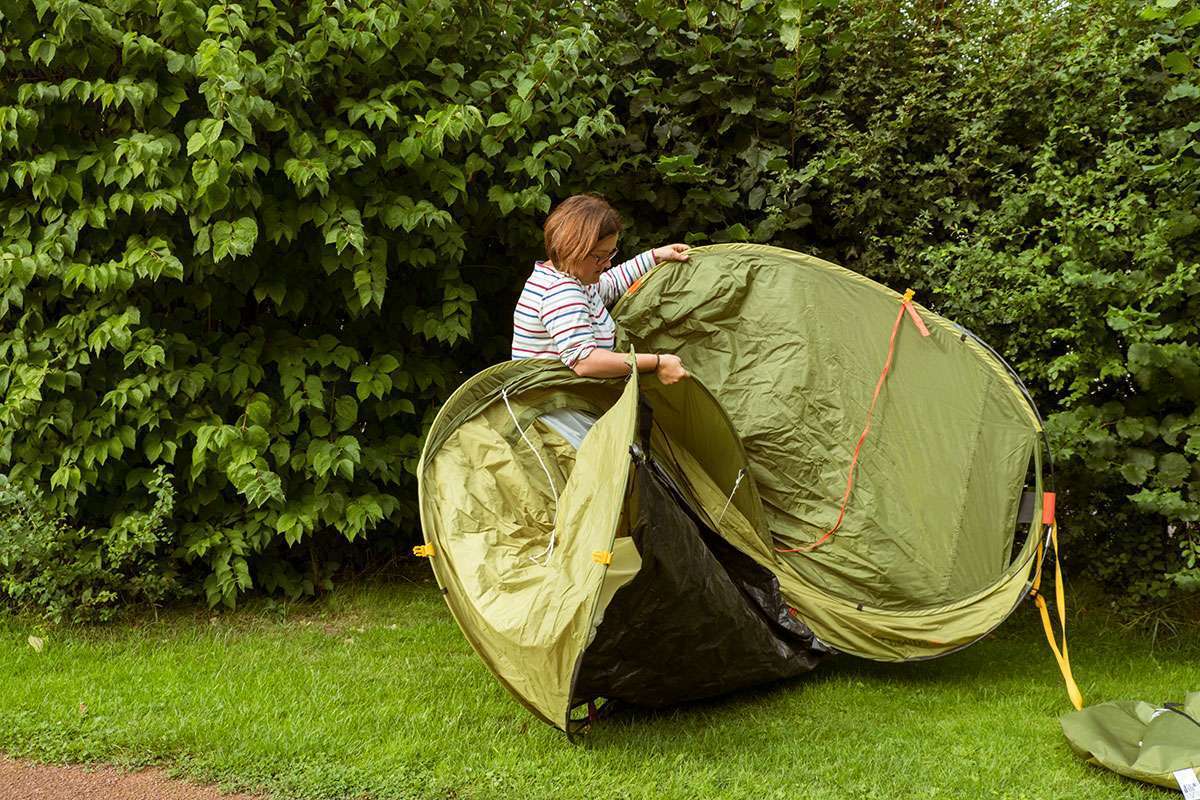
Pop-up tents have transformed the camping experience, offering quick and convenient shelter for outdoor enthusiasts. Whether you’re going camping, attending a music festival, or enjoying a day at the beach, these lightweight and easy-to-assemble tents are an excellent solution. This article will provide a detailed guide on effectively utilising a pop-up tent, ensuring a seamless and enjoyable outdoor experience.
Before delving into the specifics of using a pop-up tent, selecting the right one for your needs is essential. Consider factors such as tent size, weather resistance, ventilation, and ease of setup. Choose a tent that suits the number of occupants, provides reliable waterproofing, and offers sufficient mesh panels for airflow.
Upon acquiring your pop-up tent, take the time to familiarise yourself with its components. Unpack the tent and inspect each part, including the poles, rainfly, stakes, and guylines. Understand how the tent unfolds, and the tent poles connect to ensure a smooth setup process.
Practice makes perfect; the same applies to setting up your pop-up tent. Before your camping trip, practice assembling and disassembling the tent in your backyard or a nearby park, and this will help you become proficient in setting up and identifying potential issues or missing parts.
Choose a suitable location for your tent, considering factors such as even ground, natural shelter from wind or rain, and proximity to necessary amenities like water sources and restrooms. Clear the area of any sharp objects, rocks, or debris that could damage the tent floor.
To set up your pop-up tent, start by unfolding it and lay it flat on the ground. Locate the central hub or mechanism that helps the tent pop into shape. Apply gentle pressure and watch as the tent expands and takes its form. Extend the poles and secure them in their designated slots or pockets, ensuring they are fully inserted for stability.
Once the tent is upright, use stakes or pegs to secure it to the ground. Push the stakes through the designated loops or grommets and firmly into the ground. Ensure the tent is taut, but avoid overstretching, as it may strain the material. Use guylines or ropes to further stabilise the tent, especially in windy conditions.
Most pop-up tents come with a detachable rainfly. If you anticipate rain or desire extra protection, attach the rainfly by aligning its hooks or straps with the corresponding points on the tent. This will help keep the interior dry. Use the tent’s ventilation features, such as mesh panels or windows, to promote airflow and minimise condensation.
Once the tent is fully set up, organise the interior space to maximise comfort and functionality. Use sleeping pads or air mattresses, sleeping bags, and camping pillows to create a cosy sleeping area. Utilise storage pockets or hanging organisers to keep essentials within easy reach.
When it’s time to pack up your pop-up tent, follow the reverse assembly process. Start by removing the stakes and guylines, then collapse the poles and fold the tent back into its original shape. Carefully place it back into the carrying bag, ensuring all components are properly stored and secure.
Using a pop-up tent offers the convenience of quick setup and takedown, allowing you to focus on enjoying your outdoor adventures. By carefully selecting the right tent, practising the setup process, and taking proper care during usage and packing, you can make the most of your pop-up tent and create memorable outdoor experiences.
